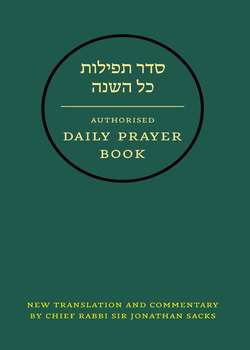Читать книгу Hebrew Daily Prayer Book - Jonathan Sacks - Страница 26
11. JACOB’S LADDER
ОглавлениеPRAYER IS A JOURNEY THAT HAS BEEN described in many ways. According to the mystics, it is a journey through the four levels of being – Action, Formation, Creation and Emanation. Rabbi Jacob Emden worked out an elaborate scheme in which the prayers represent a movement from the outer courtyards to the Holy of the Holies of the Temple in Jerusalem. According to everyone, the stages of prayer constitute an ascent and descent, reaching their highest level in the middle, in the Shema and Amidah.
The metaphor that, to me, captures the spirit of prayer more than any other is Jacob’s dream in which, alone at night, fleeing danger, far from home, he saw a ladder stretching from earth to heaven with angels ascending and descending. He woke and said, “How awesome is this place! This is none other than the house of GOD; this is the gate to heaven” (Genesis 28:10–17).
Our Sages said that “this place” was Jerusalem. That is midrashic truth. But there is another meaning, the plain one, no less transfiguring. The verb the Torah uses, vayifgah, means “to happen upon, as if by chance”. “This place” was any place. Any place, any time, even the dark of a lonely night, can be a place and time for prayer. If we have the strength to dream and then, awakening, refuse to let go of the dream, then here, now, where I stand, can be the gate to heaven.
Prayer is a ladder and we are the angels. If there is one theme sounded throughout the prayers, it is creation-revelation-redemption, or ascent-summit-descent. In the Verses of Praise, we climb from earth to heaven by meditating on creation. Like a Turner or Monet landscape, the psalms let us see the universe bathed in light, but this light is not the light of beauty but of holiness; the light the Sages say GOD made on the first day and “hid for the righteous in the life to come”. Through some of the most magnificent poetry ever written, we see the world as GOD’S masterpiece, suffused with His radiance, until we reach a crescendo in Psalm 150 with its thirteen-fold repetition of “Praise” in a mere thirty-seven words.
By the time we reach Bar’chu and the blessings of the Shema we have neared the summit. Now we are in heaven with the angels. We have reached revelation. The Divine presence is close, almost tangible. We speak of love in one of the most hauntingly beautiful of blessings, “Great love” with its striking phrase: “Our Father, merciful Father, the Merciful, have mercy on us”. Now comes the great declaration of faith at the heart of prayer, the Shema with its passionate profession of the unity of GOD and the highest of all expressions of love, “with all your heart, with all your soul, and with all your might” Ending with a reference to the exodus, the Shema gives way to the Emet blessing with its emphasis on redemption, the exodus and the division of the sea. Then comes the Amidah, the supreme height of prayer. Three traditions fuse at this point: the silent Amidah said by individuals, reminding us of prophetic prayer; the Leader’s repetition representing priestly worship and prayer as sacrifice; and then the Kedushah, prayer as a mystical experience.
From here, prayer begins its descent. First comes Tachanun in which we speak privately and intimately to the King. At this point, with a mixture of anguish and plea, we speak not of GOD’S love for Israel but of Israel’s defiant love of GOD: “Yet despite all this we did not forget You; please do not forget us” There is a direct reference back to the Shema: “Guardian of Israel, guard the remnant of Israel, and let not Israel perish who declare: Shema Yisrael”.
Then comes Ashrei and the subsequent passages, similar to the Verses of Praise but this time with redemption, not creation, as their theme. The key verse is “A redeemer will come to Zion”. The section closes with a prayer that we may become agents of redemption as we re-engage with the world (“May it be Your will … that we keep Your laws in this world”). We are now back on earth, the service complete except for Aleinu, Kaddish and the Psalm of the Day. We are ready to re-enter life and its challenges.
What has prayer achieved? If we have truly prayed, we now know that the world did not materialise by chance. A single guiding will directed its apparent randomness. We know too that this will did not end there, but remains intimately involved with the universe, which He renews daily, and with humanity over whose destinies He presides. We have climbed the high ladder and have seen, if only dimly, how small some of our worries are. Our emotional landscape has been expanded. We have given voice to a whole range of emotions: thanks, praise, love, awe, guilt, repentance, remembrance, hope. As we leave the synagogue for the world outside, we now know that we are not alone; that GOD is with us; that we need not fear failure, for GOD forgives; that our hopes are not vain; that we are here for a purpose and there is work to do.
We are not the same after we have stood in the Divine presence as we were before. We have been transformed. We see the world in a different light. Perhaps we radiate a different light. We have spoken and listened to GOD. We have aligned ourselves with the moral energies of the universe. We have become, in Lurianic terminology, vessels for GOD’S blessing. We are changed by prayer.
